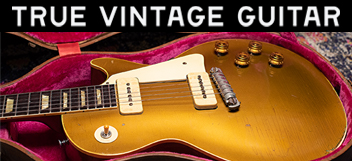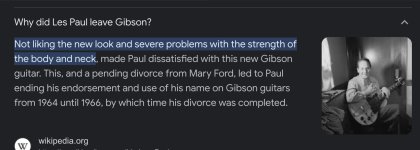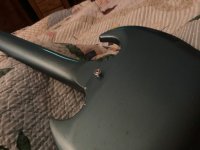blueline
Active member
- Joined
- Mar 31, 2005
- Messages
- 200
I am back with my quick test results"Blade neck" refers to the wide flat necks of the 60'-62' SG/LP's. I had a mint 61' and 62' LP with sideways vibrola's. They both had that problem. It didn't matter if I "blocked" the sideways vibrola...dead spots were still there. Played a bunch at guitar shows over the last 20 years and they all had it. Later SG's with Maestro's don't have that issue....That's why I have one now. Never played one with a ebony stop so I can't say if those have that issue..
Cheers
My reference guitar was a ES-335T logged in the ledger on Feb 1959. It was a top tail with a C shaped neck with a soft V in the first fret area. The PAFS were original but frets had been replaced. The strings were not fresh. The test guitar was Les Paul standard with original sideways vibrato and 2 PAFS logged in the ledger on June 1961.
Each guitar was tested acoustically and also with a Fender Princeton amp. The dead spot” was operationalized as a note that did not ring out or sustain or exhibited a sharp fade compared to other notes. Each note on the G B and E was assessed moving slowly from 1st to the22nd fret and back again..
The results showed that as expected, the 335 showed no so called “dead spots’ but I discovered that it favoured the B note on any string. Any B note seemed to ring out more and sustain longer.
On the 61 standard, moving up and down the fret board revealed that although not like the level of intensity as 335, this guitar likes the G note. The G note on the 12 fret sustained well However i noted that F note on the G string 10th fret seemed decay quicker than the others. . Past the 12 fret toward the 22nd fret, all the notes rang out. I suspected that maybe the old frets that were quite low plus old strings might be involved. To test that out I ran the test again on a 1960 LP model that had new frets and strings. There was no difference between the 11th and 12th fret and no “ G spot”.
In conclusion, I found no support for the theory that “dead spots” are an inherent characteristic of 1961 standard.
I leave you with Joe B. ripping in up his 60 LP/SG, dead spots, blade neck, sideways vibrato and and all.
https://www.youtube.com/results?search_query=joe+bonamassa+blistering+guitar+solo







